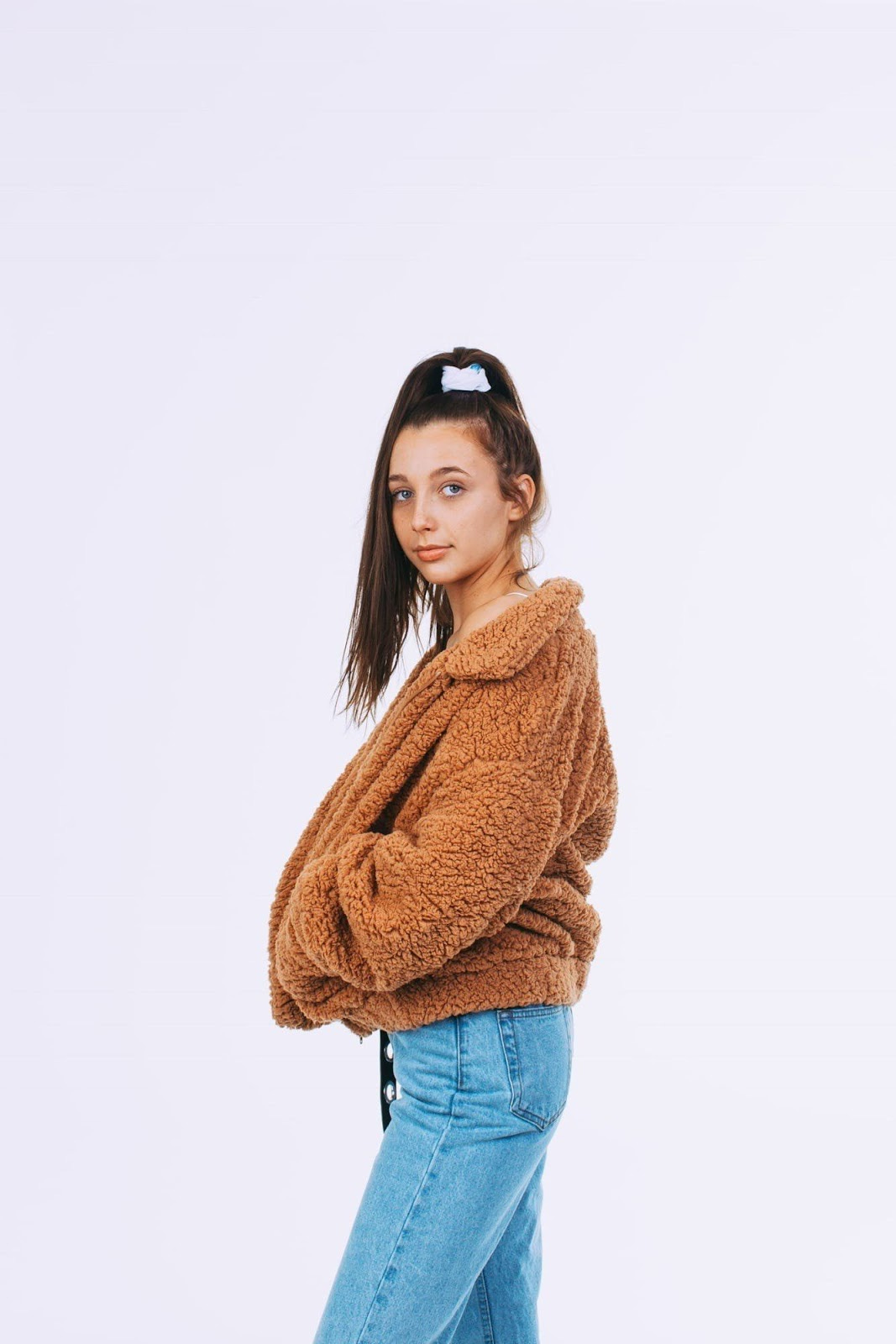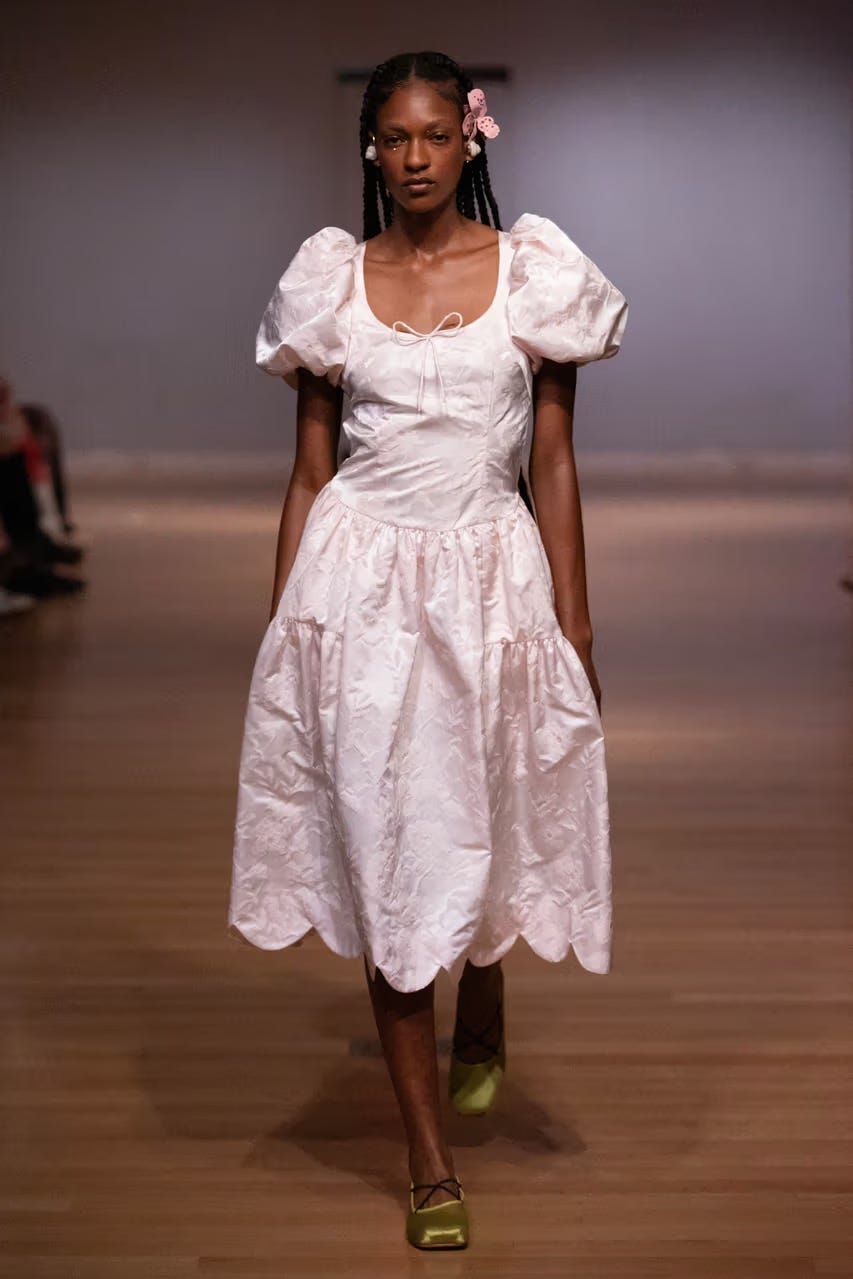Embarking on this new year with great enthusiasm, I’m thrilled to welcome Julia Kulik, a current student participant in our Fall/Winter student writing program. In today’s article, Julia takes a critical look at the impact of fast fashion giants like SHEIN on the fashion industry. With a keen eye for detail, Julia explores how the relentless promotion of microtrends by these companies has transformed the landscape of style, often at the expense of ethical practices and environmental considerations.
Join us as Julia shares her insights, shedding light on the pitfalls of fleeting fashion fads and advocating for a more conscious and individualistic approach to personal style.
Happy reading,
Amarissa
If you ask any of my fellow Design & Merchandising major students the one word they hear the most at Drexel University, they will say “sustainability”. As a young professional stepping into the fashion industry, I’m constantly surrounded by discussions on sustainable and ethical fashion. While I highly value sustainability in fashion, I can’t help but notice the influence fast fashion companies wield over trends and fashion itself.
Social media platforms, especially TikTok, play a significant role in promoting microtrends like “Ballet Core” or “Coconut Girl” that last maybe a few months before being tossed aside for the next big thing. While it is expected for trends to come and go, these microtrends are cycling at an astonishing pace, aligning with the rapid production and discard cycle of merchandise by fast fashion giants like Shein. These companies leverage microtrends born on social media to capitalize on individuals eager to stay "on trend," adversely impacting both the environment and consumers' self-perception of their style. Having personally succumbed to microtrends in the past, I find the concept simultaneously intriguing and concerning.
To grasp their influence on the fashion industry, it's crucial to delve into the mechanics of microtrends. These trends, often propelled by social media, experience intense popularity for a fleeting period—typically lasting a few months—only to swiftly fall out of favor after reaching their peak. Most microtrends are fortunate if they endure for a full season. Stay tuned as I explore some of the most prominent microtrends from the past five years.
2018: The VSCO Girl
Since its launch in 2018, TikTok has wielded immense influence in the fashion industry, offering a quick fix to our short attention spans. In an era where the Internet rules, it’s no surprise that TikTok has become a popular catalyst for initiating and spreading trends. One of the very first trends to dominate the platform was the “VSCO girl” phenomenon, popularized in 2019. The aesthetic, synonymous with oversized surfer brand t-shirts, whimsically charming shoes like Crocs or Birkenstocks, and the most oversized scrunchie imaginable, aligns with content often edited and shared using the VSCO photo editing app by numerous teenage girls.
Having been a former VSCO girl myself, I can affirm that its primary purpose was to enhance the aesthetic appeal of your VSCO feed. Youtubers like Emma Chamberlain were the face of the VSCO girl movement, influencing their younger fans to join the trend. Concurrently, as the VSCO girl trend gained momentum, TikTok was rising in popularity. It quickly catapulted to the top of the social media pyramid, becoming a beloved platform for even the least Internet-friendly of users.
Despite its widespread presence on social media, the VSCO girl trend failed to infiltrate the runways. Over time, VSCO girls found themselves subjected to ridicule, fading into obscurity, with very few still actively engaging in the movement, if any.
2021: Y2K Revival
As the pandemic unfolded, Y2K fashion had its revival. In 2020 and 2021, there was a notable emphasis on embracing the “McBling” aesthetic of the early 2000s, leading to the revival of iconic brands like Juicy Couture and VonDutch. With everyone stuck at home during COVID-19, there was a surge in popularity for hot pink tones and a nostalgic embrace of characters such as Hello Kitty and the Bratz franchise. Bright, oversaturated colors and bold animal prints (hello, Roberto Cavalli!) contrasted the dreary neutrals of quarantine. Shoppers everywhere fought over Ed Hardy t-shirts and Von Dutch trucker hats while thrifting.
Additionally, butterflies and sheer mesh materials came back into the spotlight, evident in the designs of Blumarine’s Spring Summer 22 Ready-to-Wear collection as well as Acne Studios’ Spring Summer 22 Ready-to-Wear Collection. Unfortunately, this trend went hand in hand with the surging popularity of SHEIN. Micro-influencers on TikTok flooded feeds with “SHEIN hauls” showcasing hundreds of garments for incredibly cheap prices, promoting unhealthy shopping habits. This officially marked the beginning of society’s dangerous descent into overspending, overconsumption, and the death of numerous small businesses.
Sustainable fashion enthusiasts began to speak out, and eventually, the trend died down. While remnants of the Y2K revival remain, the general essence of the 2021 version of the trend has gone out of style.
2023: Ballet Core
The newest sensation to sweep the fashion industry is “Ballet Core”, a sub-trend of the “Coquette” style. Drawing inspiration from ballerinas, the trend spotlights leg warmers, ballet flats, leotards, wrap tops, and tulle skirts as prominent features in the fashion landscape. However, the standout element of the trend is undeniably the ribbon bow, adorning everything from sweaters to puffer jackets, and gaining particular popularity when woven into sneakers or attached to purses.
Ballet Core has had a substantial effect on the public and the fashion industry alike. The hashtag #balletcore currently has over 142 million views on TikTok, and it's even inspired TikTok users to join ballet classes. Designers such as Christian Siriano, Hanako Maeda, and Marie Adam Leenaerdt have all released Spring/Summer 2024 runway collections containing elements of Ballet Core.
However, unlike other recent trends, this trend did not originate in the 21st Century. Fashion designers have been creating garments that showcase ballet dancers for decades, from Christian Dior in the late 1940s to John Galliano and Julie Kent in the 1990s, and most recently, Molly Goddard, Miu Miu, and Ming Ma.
Based on the lengthy history of the fashion industry’s obsession with dance, it’s clear that the Ballet Core trend isn’t going anywhere and will probably continue well into 2024. Could this microtrend turn into more than a simple fad? Only time will tell.
The SHEIN Epidemic
Fast fashion is a complicated topic. While it is absolutely not sustainable or ethical, there’s no denying that it is extremely profitable from a corporate perspective. The most obvious example? SHEIN. Founded in 2008 as a wholesaler for wedding dresses in China, it has transformed into a global retailer with its own supply chain (as of 2013). In 2021, SHEIN overtook Amazon as the most downloaded shipping site in the US that year and has had some of the highest net sales in e-commerce to date ($100 billion in 2022 according to Bloomberg).
SHEIN privately filed for a US IPO in November of 2023, and is expected to go public in 2024. There are currently talks of Shein buying out global powerhouses such as H&M and Zara, proving that Shein has become a force of its own in the fashion industry. According to their website, Shein uses “on-demand manufacturing technology to connect suppliers to our [their] agile supply chain, reducing inventory waste and enabling us [them] to deliver a variety of affordable products to customers around the world”. However, their actions contradict their words. As stated in Time Magazine and according to Synthetics Anonymous, a report on fashion sustainability, “the manufacturer’s rapid use of virgin polyester and large consumption of oil churns out the same amount of CO2 as approximately 180 coal-fired power plants. As a result, the company leaves about 6.3 million tons of carbon dioxide a year in its trail”.
In what world does this reduce waste? In a weak attempt to take responsibility for their unsustainable practices, SHEIN announced their funding agreement with The Or Foundation in June of 2022. The Or Foundation is engaged in projects in Ghana, a country where there is a prevalence of used clothing, to reduce textile waste while simultaneously giving jobs to women in need. SHEIN voluntarily agreed to begin an EPR (extended producer responsibility) fund of $15 million over three years to The Or Foundation.
While this is a great start, it simply does not make up for the negative impact SHEIN has had not only on the environment but on the fashion industry as a whole. And while SHEIN may be the ones producing the garments, the true culprits are the influencers on TikTok shamelessly promoting extreme overconsumption.
The Power of Influencers
Preying on young fashion aficionados desperate to follow the latest trends, influencers post massive SHEIN hauls, inadvertently normalizing these excessive acts of overconsumption for their audience. And with overconsumption comes the loss of individuality. It is the thief of self-expression, robbing its victims of the capacity to express themselves through fashion. Instead, consumers are encouraged to buy a whole new wardrobe every few weeks, throw out their old clothes, and become mindless pawns to companies like SHEIN.
Unfortunately, there always has and always will be a tremendous amount of pressure put on teenagers to “fit in”. And in a desperate attempt to seek the validation of their peers (we’ve all been there), teenagers will continue to feed into these microtrends. It’s a never-ending cycle; prices are increasing while the quality of the garments we wear is decreasing, and it won’t stop until the fashion industry puts a stop to these microtrends once and for all.
Reclaiming Individuality
So, how can young members of the fashion industry such as myself stop feeding into microtrends? The key is to reclaim agency and rediscover the art of self-expression. Begin by evaluating your personal style— identify the silhouettes and colors that truly resonate with you. Instead of letting influencers and celebrities dictate your wardrobe choices, prioritize your tastes and preferences when shopping. This approach allows you to cherish and celebrate your individuality.
It’s also important to shop from brands that maintain consistency in their brand identity. Treat your wardrobe as an investment, fill it with garments of high quality that are made by brands that align with your values and style. In doing so, you are not only preventing the spread of fast fashion and micro trends but also investing in your own identity. Celebrate all that you embody, your closet will thank you.
Final oversight & edits by Amarissa.
Today’s writer…
Julia is a participant in Fashion Talk's Winter ‘24 Student Writing Program. Aligned with our mission to uplift young voices in the fashion industry, we’re excited to share her fresh and insightful perspective with our community.
Get to know Julia here.
connect with us: IG → pinterest → twitter → bluesky
















Hey Amarissa, I'm a freelance reporter writing a piece for New York Magazine on Shein's fashion expansion. I found this really informative, and would love to talk if you or Julia have time to share some brief insights. My piece is primarily about Shein launching side-brands like Glowmode, Luvlette, MOTF as it prepares to go public in the US. My email is terrygtnguyen[at]gmail[dot]com. Thank you!
Finally! Saying what needed to be said. I hate Shein, I wish more people did. Poor quality items for the latest trend... tsk tsk.
"Rediscover the art of self expression" I love that. Good work!